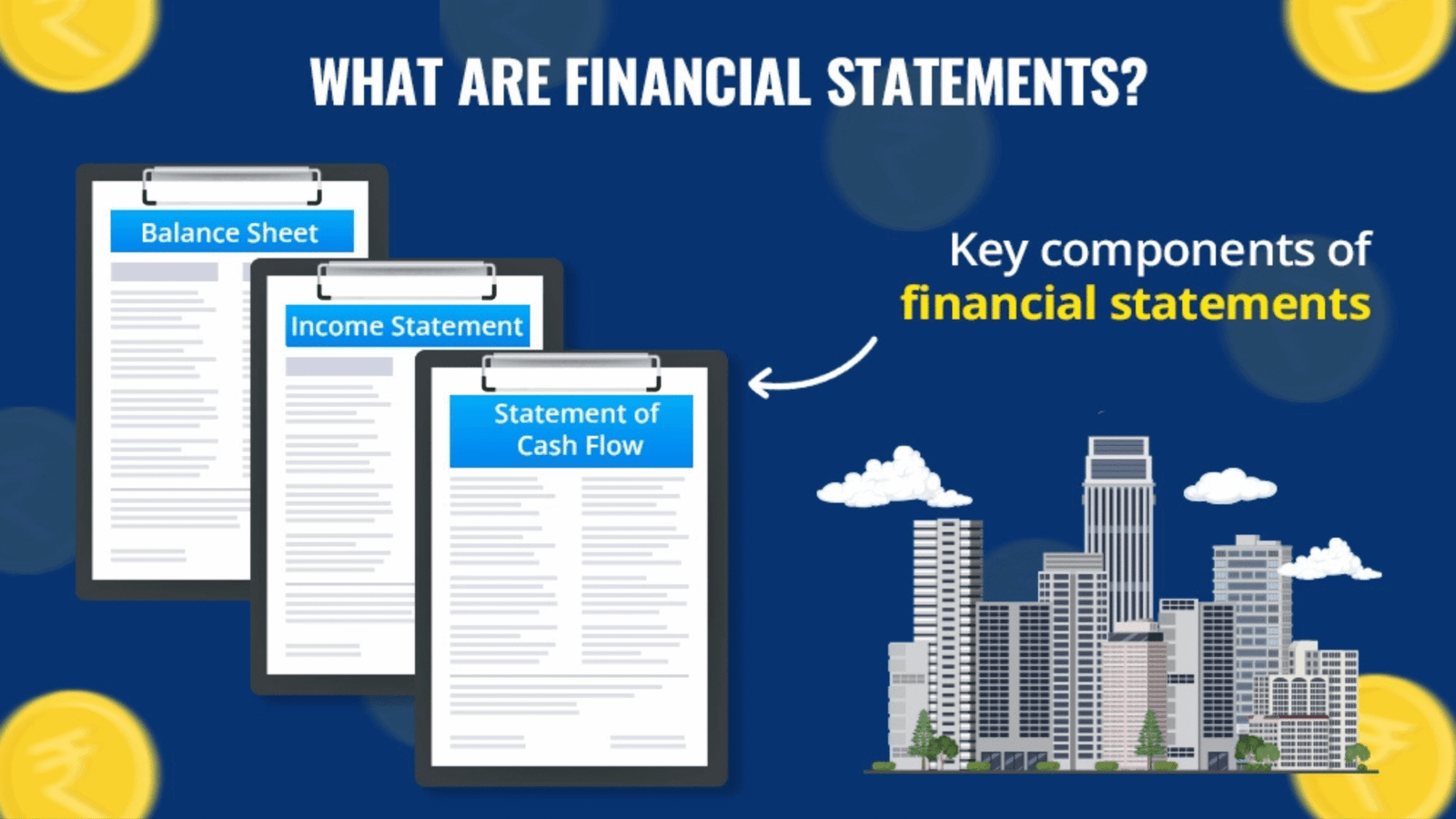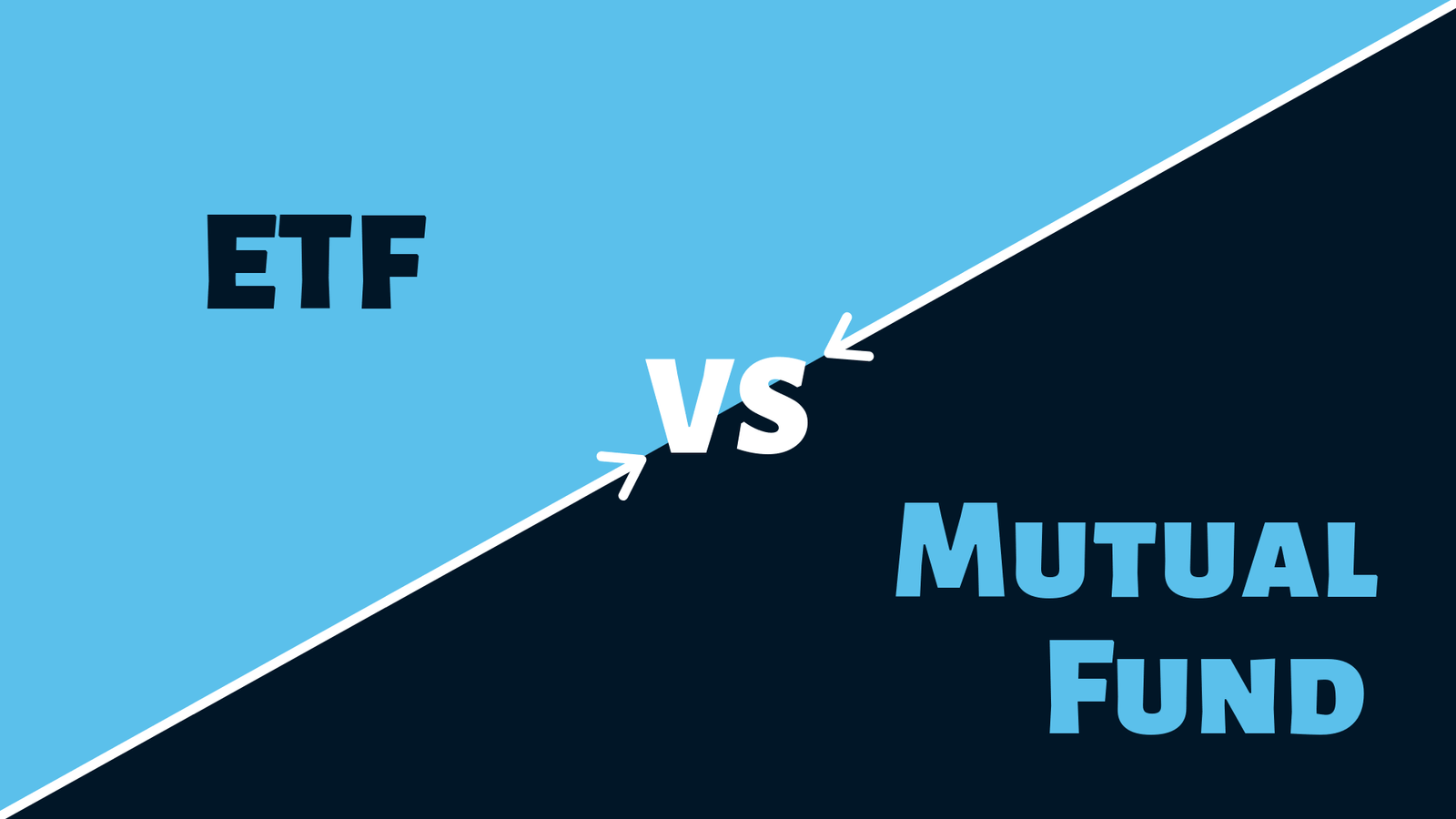Did you know that over $11.2 trillion in assets are directly tied to the S&P 500’s performance alone? This staggering figure represents how deeply financial benchmarks influence our economy and investment decisions.
When financial news reports that “the Dow dropped 500 points” or “the Nasdaq reached a new high,” they’re referring to powerful tools that track the collective performance of numerous companies. These benchmarks serve as vital economic barometers, providing a snapshot of financial health across various sectors.
For investors, these indicators provide essential reference points to evaluate portfolio performance. Whether you’re comparing your investments against the broad-based S&P 500, the industrial-focused Dow Jones, or the tech-heavy Nasdaq, understanding how these benchmarks function is crucial for informed decision-making.
The daily fluctuations in these measurements reflect countless factors—from corporate earnings and economic data to global events and investor sentiment. By grasping how these indicators work, you’ll gain valuable insight into the forces driving financial markets.
Throughout this guide, we’ll explore the mechanics behind these financial yardsticks, their calculation methods, and how they can enhance your investment strategy.
Key Takeaways
- Major indices like the S&P 500 influence over $11 trillion in investment assets
- Indices serve as standardized benchmarks for measuring investment performance
- Different indices track various market segments (broad market, industrial, technology)
- Daily index movements reflect economic conditions and investor sentiment
- Understanding indices helps investors make more informed financial decisions
- Each index uses specific methodologies to calculate market performance
Understanding Stock Market Index Basics
Stock market indices are mathematical constructs, designed to track the performance of specific groups of stocks. They offer a condensed view of market activity, transforming complex movements of multiple securities into single, trackable figures. Investors can gauge overall market sentiment through these indicators, eliminating the need to monitor thousands of individual stocks.
A stock market index represents a hypothetical portfolio of securities that reflects a specific market segment. This segment might encompass an entire market, a particular sector like technology or healthcare, or stocks selected based on specific criteria such as company size or growth. The mathematical formulation behind each index determines how accurately it represents its target market segment.
The concept of tracking market performance through indices dates back to the late 19th century. Charles Dow, co-founder of Dow Jones & Company, created the first stock market average in 1896. His innovation laid the groundwork for modern stock market analysis by providing a systematic way to measure market movements. Today’s sophisticated indices build upon this foundational concept.
Unlike individual stock prices that represent the value of a single company, indices capture collective performance. This distinction is critical for understanding market trends. When analysts report that “the market is up,” they’re typically referring to the movement of major indices, not every stock in the marketplace.
Indices are expressed in points, not dollar values. For example, when you hear “the S&P 500 closed at 4,500 points,” this figure represents the mathematical calculation of the index, not a specific monetary amount. Changes in index values are typically reported in both absolute points and percentage movements to provide context.
Every index begins with a baseline value—often 100 or 1,000 points—established at its inception. As the component stocks’ prices change, the index value adjusts. This relative measurement allows investors to track performance over time compared to the starting point. For instance, if an index launched at 100 points has now reached 150 points, it indicates a 50% increase.
We find that the true value of indices lies in their ability to simplify complex market dynamics. By distilling thousands of individual price movements into single figures, they provide investors with clear signposts for market direction. This simplification makes stock market indices indispensable tools for both professional and retail investors.
| Index Characteristic | Purpose | Investor Benefit | Example |
|---|---|---|---|
| Benchmark Function | Provides reference point for performance | Allows comparison of investment returns | Comparing fund performance to S&P 500 |
| Market Representation | Reflects specific market segments | Offers insights into sector performance | NASDAQ-100 for technology sector trends |
| Historical Tracking | Records market movements over time | Enables analysis of long-term trends | Studying Dow Jones performance from 1896 |
| Investable Products | Serves as basis for financial products | Creates accessible investment vehicles | Index funds and ETFs tracking major indices |
Understanding the basics of stock market indices provides a foundation for more advanced market analysis. These mathematical constructs serve as the backbone of financial markets, providing a simplified lens through which to view complex market dynamics. As we explore specific indices in the following sections, this fundamental understanding will help contextualize their importance and application.
Popular Stock Market Indexes in the U.S.
The U.S. financial markets are home to several influential stock exchange indices, providing critical insights into economic trends and investor sentiment. Among the myriad of indexes, three major ones stand out as the primary benchmarks for American stock market performance.
The S&P 500, established in 1957, has emerged as the quintessential measure of large-cap U.S. equity performance. It tracks 500 leading companies across diverse sectors, accounting for approximately 80% of the available market capitalization in the American economy. Its broad-based composition makes it the preferred benchmark for professional money managers, serving as the foundation for numerous index funds and ETFs.
Unlike some narrower indices, the S&P 500 is weighted by market capitalization, meaning larger companies have greater influence on its movement. This methodology provides a more accurate reflection of overall market conditions than simple price-weighted alternatives.
The Dow Jones Industrial Average (DJIA) holds the distinction of being America’s oldest continuing stock market index. Established in 1896, this iconic benchmark consists of just 30 large, “blue-chip” companies selected to represent the industrial sector of the economy. Despite its relatively narrow focus, the Dow remains culturally significant and is widely cited in financial news.
Recent market data shows DJIA futures trading patterns reflecting investor reactions to component company earnings. For instance, Home Depot’s mixed earnings report recently caused fluctuations in the index while broader market indicators showed different movements.
The Nasdaq Composite, introduced in 1971, takes a different approach by encompassing over 3,000 companies listed on the Nasdaq stock exchange. What distinguishes this index is its heavy concentration in technology stocks, making it highly sensitive to tech sector developments.
This tech-weighted composition explains why the Nasdaq often exhibits different performance patterns than other major indices. Current data illustrates this divergence, with Nasdaq 100 contracts recently declining by 0.4% while other indices showed varying results. The S&P 500 futures dropped approximately 0.3% after six consecutive days of gains during the same period.
Each of these major indices serves distinct purposes for investors seeking to understand market performance across different segments of the American economy. The S&P 500 offers the broadest view, the Dow provides a quick snapshot of industrial giants, and the Nasdaq reflects the health of the technology-driven economy.
Beyond these three giants, other notable U.S. indices include the Russell 2000 (tracking small-cap companies), the Wilshire 5000 (the broadest measure of the entire U.S. stock market), and various sector-specific indices that focus on industries like healthcare, energy, or financial services.
For investors and analysts alike, these stock exchange indices serve as essential tools for benchmarking performance, measuring economic health, and developing investment strategies aligned with specific market segments.
How Indices Are Calculated

The intricacies of stock market indices are rooted in their calculation methodologies, which dictate their behavior and significance. These methodologies determine the influence of specific companies on index movements and the accuracy of the index in reflecting market conditions. For those engaged in trading indices or utilizing them as benchmarks, grasping these methodologies is imperative.
The financial sector predominantly employs two calculation methodologies for indices: price-weighting and market capitalization weighting. Each methodology offers a distinct representation of the market, influencing how stock market data is interpreted.
Price-weighted indices, exemplified by the Dow Jones Industrial Average, allocate influence based solely on a company’s share price. In this framework, a stock priced at $100 exerts twice the influence on the index as a $50 stock, irrespective of the companies’ actual sizes. This methodology creates a dynamic where stock splits can significantly alter a company’s influence on the index, without any fundamental change in the business.
For instance, if Company A trades at $200 per share and Company B at $50, Company A will have four times more influence on a price-weighted index, despite Company B’s larger market value. This can distort the index’s representation of the broader market.
Market capitalization-weighted indices, such as the S&P 500 and Nasdaq Composite, employ a different approach. These indices assign weight based on a company’s total market value, calculated by multiplying share price by outstanding shares. This method provides a more proportional representation of the market, as larger companies naturally have more influence on index movements.
Under this system, tech giants like Apple and Microsoft exert substantial influence on the S&P 500 due to their massive market capitalizations. When these companies experience significant price movements, they can drive the entire index up or down, reflecting their outsized importance in the actual economy.
Several additional factors influence how indices are calculated beyond these basic methodologies:
- Free-float adjustments – Many indices consider only publicly available shares, excluding shares held by governments or company insiders
- Divisor adjustments – Mathematical factors that maintain index continuity after corporate actions like stock splits or component changes
- Rebalancing schedules – Periodic reviews that adjust component weightings or replace companies that no longer meet inclusion criteria
- Inclusion criteria – Specific requirements companies must meet to be included, such as minimum market cap, liquidity, or profitability
Some indices employ more specialized calculation methods. Equal-weighted indices give the same importance to each component regardless of size. Fundamental-weighted indices base weightings on financial metrics like revenue or dividends, as opposed to market value.
The calculation methodology directly affects how market movements are represented and which companies drive index performance. When analyzing stock market data or trading indices, investors must always consider the underlying calculation method to properly interpret what the index is actually telling them about market conditions.
The Importance of Stock Market Indexes
The role of stock market indexes transcends mere price tracking, profoundly influencing investment strategies and economic policies. These instruments offer a glimpse into market sentiment and economic vitality, indispensable for investors, economists, and policymakers.
Recent stock market updates have highlighted the S&P 500’s achievement of six consecutive days of gains, followed by a slight decline. This sequence exemplifies indexes’ role as real-time indicators of investor confidence and economic outlook.
Market indexes perform several vital functions within our financial system:
- Economic Indicators – Major indexes often signal broader economic shifts, functioning as leading or concurrent indicators of economic health
- Policy Guidance – Central banks and government agencies closely monitor index performance when formulating monetary and fiscal policies
- Performance Benchmarks – Professional fund managers measure their success against appropriate indexes
- Investment Context – Individual investors use indexes to evaluate personal portfolio performance
Examining stock market trends through indexes offers context lacking in individual stock movements. A rising S&P 500 amidst declining individual stocks might indicate sector rotation, not overall market weakness. This nuanced understanding aids investors in making more informed decisions.
For professional money managers, indexes foster accountability and transparency. Equity fund managers typically aim to outperform the S&P 500, while specialized sector funds benchmark against industry-specific indexes. This standard helps investors assess the value of management fees.
The index has become the market, and the market has become the index.
Individual investors benefit from indexes by gaining perspective on reasonable performance expectations. When your portfolio rises 15% in a year when the S&P 500 gains 25%, you have valuable context for evaluating your investment strategy.
Index-based investing through mutual funds and ETFs has transformed capital flow through markets. Approximately 45% of all U.S. equity assets are now benchmarked to the S&P 500. This massive influence demonstrates how these mathematical constructs directly impact capital allocation throughout the economy.
Daily stock market updates highlighting index movements are not merely financial news—they are signals guiding trillions of dollars in investment decisions. Grasping these signals offers investors a significant advantage in navigating market complexities.
Types of Stock Market Indexes
The financial realm encompasses a myriad of stock market indexes, each tailored to serve distinct investment objectives and tracking needs. These indexes offer insights into specific market segments, enabling investors to assess performance across various facets of the investment landscape. Recognizing the diversity of indexes facilitates the selection of suitable benchmarks for portfolio components.
Broad Market Indexes
Broad market indexes aim to encapsulate the performance of entire markets or substantial segments thereof. These indices provide a panoramic view of overall market performance.
The S&P 500, a quintessential broad market index, tracks 500 of the largest U.S. companies. Noteworthy among broad market indexes is the Russell 3000, which encompasses approximately 3,000 of the largest U.S. companies, representing about 98% of the investable U.S. equity market.
The Wilshire 5000 Total Market Index is another significant broad market index. Despite its name, it includes virtually all actively traded U.S. stocks with readily available prices—currently around 3,500 companies. This index is often regarded as the most exhaustive measure of the U.S. stock market.
Sector-Specific Indexes
Sector indexes concentrate on particular industries or economic segments, allowing investors to monitor performance in targeted areas of the economy. These specialized indices facilitate a more detailed analysis of market trends within specific economic sectors.
Notable sector indexes include the Technology Select Sector SPDR Index, which tracks technology stocks within the S&P 500. The S&P 500 Energy Sector Index follows energy companies, while the Dow Jones U.S. Real Estate Index monitors real estate investments.
Sector indexes are invaluable for investors seeking to:
- Compare performance across different industries
- Identify sector rotation trends in the broader market
- Target specific sectors for investment based on economic outlook
- Benchmark performance of sector-focused investment strategies
International Indexes
International indexes track markets outside an investor’s home country. These indexes enable investors to gauge performance in foreign markets and serve as benchmarks for international investment strategies.
“Global stock indices provide investors with a window into international markets, allowing for diversification opportunities beyond domestic borders and exposure to different economic cycles.”
Major international indexes include the FTSE 100, which tracks the 100 largest companies listed on the London Stock Exchange, and the Nikkei 225, Japan’s premier stock market index. Germany’s DAX follows 40 major German companies, while the Hang Seng Index tracks the largest companies listed in Hong Kong.
Global and Regional Indexes
For broader international exposure, investors often turn to global and regional indexes. The MSCI EAFE (Europe, Australasia, Far East) tracks developed markets outside North America, while the MSCI Emerging Markets Index follows developing economies.
The MSCI World Index attempts to capture performance across multiple countries, including approximately 1,500 stocks from 23 developed markets. This index provides investors with a holistic view of global market performance.
| Index Type | Coverage | Examples | Primary Use | Investor Benefit |
|---|---|---|---|---|
| Broad Market | Entire markets or large segments | S&P 500, Russell 3000, Wilshire 5000 | Overall market benchmarking | Comprehensive market view |
| Sector-Specific | Individual industries | Technology Select SPDR, S&P Energy Index | Industry performance tracking | Targeted sector exposure |
| International | Single foreign countries | FTSE 100, Nikkei 225, DAX | Country-specific benchmarking | Exposure to foreign economies |
| Global/Regional | Multiple countries or regions | MSCI World, MSCI EAFE, MSCI Emerging Markets | Diversified international benchmarking | Broad global diversification |
Style-Based Indexes
Style-based indexes categorize stocks based on characteristics like company size (market capitalization) or investment style (growth vs. value). The Russell 2000 tracks small-cap companies, while the S&P 500 Growth Index focuses on growth-oriented stocks within the S&P 500.
These specialized indexes enable investors to target specific investment styles and company sizes that align with their investment strategies and risk tolerance. We’ve observed that style-based indexes often exhibit different performance patterns throughout economic cycles, making them valuable tools for tactical asset allocation.
Understanding the taxonomy of stock market indexes aids investors in identifying appropriate benchmarks for different portfolio components. Whether focused domestically, internationally, or on specific market segments, there exists an index designed to track that particular slice of the investment universe.
How to Invest Using Stock Market Indexes

Contemporary investors can engage with stock market index performance through various accessible investment vehicles, obviating the necessity of individual security selection. These options have transformed the accessibility of the markets, rendering broad market exposure both more affordable and straightforward than ever before.
Index Funds: The Original Passive Investment
Index funds, pioneered by Vanguard founder John Bogle in the 1970s, represent a quintessential method for investing in market indexes. These mutual funds are meticulously constructed to replicate the composition and performance of specific indices, such as the S&P 500 or Russell 2000.
The primary responsibility of the fund manager is to maintain a portfolio that aligns with the target index, effecting adjustments as companies enter or exit the index. This passive investment approach offers several distinct advantages:
- Lower expense ratios (often below 0.1% for major indices) compared to actively managed funds
- Greater tax efficiency due to lower portfolio turnover
- Broad market exposure through a single investment
- Elimination of individual stock selection risk
“Don’t look for the needle in the haystack. Just buy the haystack!” – John Bogle, founder of Vanguard and pioneer of index investing
The simplicity of index funds makes them ideal for long-term investors who seek to capture market returns without the complexity of analyzing individual companies. Many retirement accounts and 401(k) plans now offer index funds as core investment options.
Exchange-Traded Funds (ETFs): Enhanced Flexibility
ETFs represent a more recent innovation in index investing, combining features of mutual funds and individual stocks. Like index funds, ETFs track specific indices, but they trade on exchanges throughout the trading day like individual stocks.
This trading flexibility provides several advantages over traditional index funds:
- Intraday trading capability (versus once-daily pricing for mutual funds)
- Often lower expense ratios than comparable index funds
- Additional tax advantages through their creation/redemption mechanism
- Ability to use advanced trading techniques like limit orders
The market has witnessed explosive growth in both products, with U.S. index-based investments now exceeding $6.6 trillion in assets. This growth reflects investor recognition of the benefits of passive investing strategies.
Index Funds vs. ETFs: Choosing the Right Vehicle
When deciding between index funds and ETFs for trading indices, several factors should influence your decision:
| Feature | Index Funds | ETFs | Best For |
|---|---|---|---|
| Trading | Once daily after market close | Throughout trading day | ETFs for active traders |
| Minimum Investment | Often $1,000-$3,000 | Price of one share | ETFs for smaller investors |
| Automatic Investment | Yes, easily automated | Varies by broker | Index funds for regular savers |
| Tax Efficiency | Good | Excellent | ETFs for taxable accounts |
| Transaction Costs | May have purchase fees | Brokerage commissions | Depends on broker |
Performance Considerations
Research consistently shows that most actively managed funds underperform their benchmark indices over long time periods. According to S&P Dow Jones Indices, more than 80% of active U.S. large-cap fund managers failed to beat the S&P 500 over a 15-year period.
This persistent underperformance helps explain the growing popularity of index-based investment vehicles. By simply matching the market’s performance, investors can achieve better results than most professional money managers while paying significantly lower fees.
Practical Steps for Index Investing
For investors looking to incorporate index investing into their portfolios, we recommend these steps:
- Determine your asset allocation – Decide how much to invest in different market segments based on your goals and risk tolerance
- Select appropriate index vehicles – Choose index funds or ETFs that track your desired markets
- Compare expense ratios – Even small differences in fees can significantly impact long-term returns
- Consider tax implications – ETFs may be more appropriate for taxable accounts, while index funds might work better in tax-advantaged accounts
- Implement a regular investment plan – Consistent investing helps capture the benefits of dollar-cost averaging
By focusing on low-cost index vehicles that provide broad exposure to stock market performance, investors can build diversified portfolios without the complexity and expense of selecting individual securities. This approach aligns with the evidence that passive investing typically outperforms active management over the long term.
Stock Market Indexes and Economic Indicators
The interplay between stock market indexes and economic indicators is fundamental for a thorough market analysis and trend identification. These elements maintain a complex, bidirectional relationship, providing context for market movements and aiding investors in anticipating shifts in the economic landscape.
Stock market indexes, while not a perfect reflection of economic conditions, often serve as leading indicators, anticipating changes in the broader economy 3-6 months in advance. This predictive quality arises from indexes reflecting investors’ collective expectations regarding future corporate earnings and economic performance.
The stock market has predicted nine of the last five recessions.
This famous quip by economist Paul Samuelson emphasizes an important truth: while markets anticipate future outcomes, they do not always predict them with perfect accuracy. Despite this, the connection between indexes and economic indicators remains critical for stock market analysis.
Key Economic Indicators That Influence Market Performance
Several economic indicators exhibit strong correlations with index performance, creating recognizable stock market trends when analyzed correctly:
- GDP Growth – Typically supports positive index returns, though the relationship isn’t always immediate. Markets often react to GDP forecasts more than current readings.
- Employment Data – Monthly non-farm payrolls and unemployment rates frequently trigger market movements upon release, with unexpected changes causing the most significant reactions.
- Inflation Metrics – Consumer and producer price indexes influence market performance through their impact on corporate costs, consumer spending, and monetary policy expectations.
- Interest Rate Decisions – Directly affect corporate borrowing costs and equity valuations, making Federal Reserve announcements highly impactful on index movements.
Current market data vividly illustrates this relationship. Investor concerns about trade tensions between the US and China continue to affect market performance, with indexes responding to each development in negotiations. Growing warnings that investor relief over cooling inflation may be misplaced demonstrate how economic expectations drive index movements.
Historical Case Studies: Indexes as Economic Barometers
| Time Period | Economic Condition | Index Performance | Relationship Insight |
|---|---|---|---|
| 1970s Stagflation | High inflation, slow growth | Poor returns, high volatility | Indexes struggled with economic uncertainty |
| 1990s Tech Boom | Strong economic expansion | Extraordinary gains | Indexes amplified economic optimism |
| 2008 Financial Crisis | Severe economic contraction | Sharp decline preceding recession | Indexes anticipated economic problems |
| 2020 Pandemic | Sudden shutdown, then recovery | Quick crash, faster recovery | Indexes recovered before economy due to intervention |
The 2008 financial crisis offers a compelling example. Major indexes began declining significantly in late 2007, several months before the recession was officially recognized. By the time economic data confirmed the downturn, markets had already priced in much of the bad news.
Conversely, during the 2020 pandemic, we observed that stock market indexes rebounded dramatically while economic indicators showed significant distress. This disconnect highlighted how monetary and fiscal intervention can create divergence between market performance and economic reality.
For effective stock market analysis, investors must recognize that while indexes reflect economic expectations, they do not always move in lockstep with economic data. Understanding this nuanced relationship helps contextualize market movements and develop more informed investment strategies.
When analyzing current stock market trends, it is valuable to consider both historical patterns and unique factors influencing today’s market-economy relationship. This holistic approach provides the most accurate picture of what index movements might signal about future economic conditions.
The Role of Stock Market Indexes for Investors
Stock market indexes transcend their economic significance, playing critical roles in the construction, monitoring, and adjustment of investment portfolios. These instruments are foundational to numerous investment strategies, providing essential insights that guide financial decision-making.
Portfolio Diversification Framework
Stock market indexes facilitate the creation of diversified investment portfolios. Modern Portfolio Theory, conceived by Nobel laureate Harry Markowitz, advocates for diversification across various asset classes to optimize returns while managing risk.
Index-based investing makes diversification accessible, enabling investors to gain exposure to hundreds or thousands of securities through a single investment vehicle. Research indicates that asset allocation strategies based on major indices account for approximately 90% of portfolio return variability over time.
Investors who structure their portfolios around established indexes often achieve more consistent long-term results than those attempting to select individual securities. This approach reduces company-specific risk while maintaining exposure to broader market growth.
Market Movement Tracking
Indexes offer efficient tools for monitoring overall market conditions without the need to analyze individual securities. Daily stock market updates deliver quick insights into market direction, volatility, and sector performance, helping investors gauge the investment climate.
Technical analysts study index charts to identify support and resistance levels, trend lines, and pattern formations that may signal future market movements. These patterns often prove more reliable when observed in broad indexes than in individual stocks.
For example, when the S&P 500 forms a “double bottom” pattern, technical analysts may interpret this as a reversal signal for the broader market. Such stock market analysis helps investors time their entry and exit points more effectively.
Risk Management Tools
Institutional investors regularly use index derivatives—such as futures and options—for hedging existing positions against market downturns. These sophisticated instruments allow portfolio managers to protect gains without liquidating positions during temporary market weakness.
Individual investors can also use index-based ETFs to implement defensive strategies during uncertain market periods. For instance, increasing allocation to low-volatility index funds during turbulent times can help preserve capital while maintaining market exposure.
We’ve observed that investors who understand how to use indexes for risk management tend to weather market storms with less emotional stress and better long-term performance. This strategic approach prevents panic selling during downturns that often leads to missed recovery opportunities.
Democratization of Market Information
The widespread availability of real-time index data through financial media and investment platforms has transformed how individual investors interact with markets. Access to extensive stock market updates was once limited to financial professionals, but today’s investors can track market movements with the same timeliness.
This democratization of information helps level the playing field between institutional and individual investors. Mobile apps now deliver instant alerts about significant index movements, allowing investors to stay informed regardless of location.
Understanding how to interpret these index movements helps investors maintain perspective during market volatility. Instead of reacting emotionally to short-term fluctuations, informed investors can make more rational decisions based on broader market trends.
Benchmark for Performance Evaluation
Indexes serve as critical benchmarks against which investors can measure the performance of their portfolios or individual investments. This comparative analysis helps determine whether active management strategies are truly adding value beyond what passive index investing would provide.
Studies consistently show that a significant percentage of actively managed funds underperform their benchmark indexes over extended periods. This reality has driven the growing popularity of index funds and ETFs that simply aim to match index performance, not beat it.
We recommend that investors regularly compare their portfolio returns against appropriate benchmark indexes. This practice provides objective feedback on investment strategies and helps identify areas where adjustments might be beneficial.
For investors seeking to build wealth over time, understanding the multifaceted role of stock market indexes provides a significant advantage. These powerful tools offer structure, perspective, and analytical frameworks that support more informed and disciplined investment decisions.
Challenges and Criticisms of Stock Market Indexes
Stock market indexes, though ubiquitous as economic indicators, are subject to substantial criticisms that question their reliability as all-encompassing market metrics. They offer a convenient glimpse into specific market segments, yet it is imperative to grasp their shortcomings to make informed investment choices.
The most fundamental criticism revolves around representation limitations. Even broad-based indices, such as the S&P 500, only capture a fraction of the market—specifically, large-cap U.S. companies. This omission excludes small-cap stocks, private entities, and international markets, which may exhibit distinct performance patterns.
Market-cap weighting introduces another significant distortion. Currently, the top 10 companies in the S&P 500 account for over 30% of the index’s movement. This concentration has intensified over the past decade, raising questions about whether these indices truly reflect the “average” stock market performance.
Sector imbalances further complicate the picture. Technology stocks now comprise more than 25% of the S&P 500, creating a situation where one sector disproportionately influences index movements. This can mask weaknesses in other economic sectors and provide a skewed view of overall market health.
Survivorship bias represents another critical flaw. Indexes typically include only companies that have remained successful enough to maintain their position, automatically excluding failing businesses. This creates an artificially positive view of long-term stock market performance.
The reconstitution effect occurs when stocks are added to or removed from an index. These changes can cause significant price movements unrelated to company fundamentals as index funds adjust their holdings. We’ve observed that stocks added to major indices often experience temporary price surges that may not reflect their intrinsic value.
The difference between price returns and total returns is one of the most overlooked aspects of index analysis. Headlines typically report price-only returns, ignoring the substantial contribution of dividends to overall performance.
Short-term index movements frequently reflect technical factors, such as fund flows, options expirations, and algorithmic trading, which can drive index values in ways disconnected from underlying business performance.
Perhaps most concerning is how the growing popularity of index investing itself may distort markets. As more capital flows into passive strategies, stock prices increasingly move based on index inclusion, potentially undermining the efficiency that made indexing attractive initially.
We believe investors should approach stock exchange indices with healthy skepticism. While they provide valuable reference points, no single index offers a complete picture of market performance. Successful investors recognize these limitations and use indices as just one tool among many when evaluating investment opportunities.
Future Trends in Stock Market Indexes
Stock market indexes are undergoing a transformation, driven by shifts in investor preferences and technological progress. The emergence of ESG (Environmental, Social, and Governance) indices marks a significant milestone, with forecasts indicating global ESG assets will surpass $50 trillion by 2025. This development signifies a paradigm shift towards integrating sustainability metrics into traditional financial benchmarks.
The S&P 500 ESG Index and MSCI World ESG Leaders Index serve as exemplars of this evolution. They demonstrate how established benchmarks are evolving to incorporate sustainability metrics alongside financial criteria. This adaptation acknowledges the critical role that environmental and social factors play in determining long-term financial performance.
Technological advancements are transforming the construction and accessibility of global stock indices. The advent of advanced analytics and artificial intelligence has enabled the development of more sophisticated screening methodologies. These methodologies extend beyond the conventional market-cap weighting, embracing factor-based or “smart beta” indices. These indices utilize quantitative models to select securities based on specific characteristics, such as value or momentum.
Direct indexing is another innovation that is redefining the investment landscape. It allows investors to directly own individual components of an index, a departure from the traditional fund-based approach. This innovation empowers investors to tailor their portfolios to their unique needs, facilitating personalized customization and tax optimization strategies previously inaccessible to retail investors.
The integration of alternative stock market data sources, including satellite imagery, social media sentiment, and real-time consumer spending patterns, is further refining index construction. These technological advancements provide deeper insights into market performance, enabling investors to access more nuanced benchmarks. These benchmarks are increasingly aligned with both financial objectives and personal values, catering to a diverse range of investor needs.






